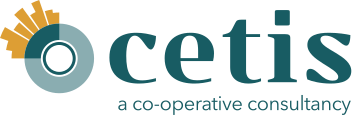Business intelligence
Data from information systems can be harnessed to provide insights into business, and to help to guide the organisation’s decision making.
Educational institutions have their own information systems: for data about students; for HR; for CRM; as well as the core systems dealing with their finances. External agencies like HESA or the ONS hold information about many educational institutions, enabling comparisons to be made. Information combined from these systems can be used to address a multitude of questions, from comparisons of student recruitment or staff activity with other institutions, through comparisons of different schools in a faculty, to different staff members’ activities or achievements.
Our decades-long experience of the business of educational institutions, especially in higher education, can help formulate the questions, and our technical expertise can help bring together the information that can reveal potential answers.
We work extensively with national agencies in these areas, as well as individual institutions. We help agencies serve the institutions more effectively, with products valued by the educational community. From our inception, we have continually worked in partnership with Jisc, and HESA has been another major client.
Tools we use include:
- Alterix for data transformation;
- Tableau for data visualisation;
- and R and Python as programming languages.
The most straightforward analyses are of past data. Good forecasts and predictions are also wanted, on the basis of the (sometimes subtle) data trends, and we work with machine learning and data science techniques to provide this kind of service, as required.
Learning analytics
While business intelligence methodology tends to use statistical data for strategic purposes, learning (or learner) analytics goes beyond this, focusing down to the operational level, to do with the learning activities of individual learners. Institutions rightly wish to offer the best student experiences available. They would like to know where to direct the scarce resources of time and money to achieve their institutionally vital targets, for instance for student retention and successful course completion. One way or another, institutions have an interest in the satisfaction and wellbeing of their learners, and that concern is increasingly a focus for work with such bodies as UUK and Advance HE.
What are the most significant questions being asked in this area? Here, again, we can help institutions and agencies identify the questions, as well as then using the data available to help answer them.
